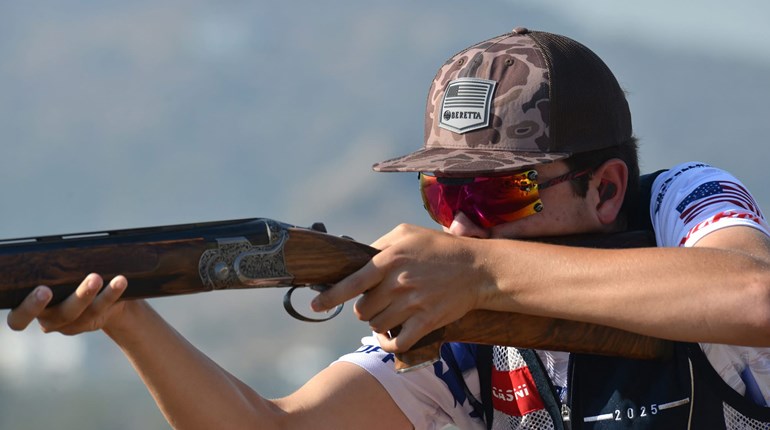
To fail to pattern your shotgun before turkey season is foolish for two reasons.
A. With turkey chokes and loads being so tight nowadays, the slightest disparity between your sight’s point of aim and your pattern’s point of impact could spell a miss on a target the size of a turkey’s head.
B. If your pattern isn’t as tight and full as you desire, try a custom choke or a different load—but you should know this before you go hunting.

Fact is, with today’s extra-full chokes and high-tech loads such as Winchester’s Longbeard XR, shots of 60-plus yards are doable, although never recommended. This devastating 60-yard pattern shows nearly 25 No. 6 pellets in the kill zone from a 2 1/8 ounce, 3 ½-inch load.

The 45,000-acre Stuart Ranch near Caddo, Okla., is a working cattle ranch with a storied past. When the full-time guides aren’t chasing deer or turkeys, they’re mending fences.

When non-native hunters think of Oklahoma, they generally envision the flat, dry and open country in the western third of the state that harbors giant flocks of Rio Grandes. Caddo, in the southeastern portion of the state, however, is hilly and lush with tall oaks and scenic creeks—and a great home to its Eastern wild turkeys.

My guide Jimmy Warner knows this country like the Caddo Indians that historically roamed it. A Tulsa firefighter by trade, Jimmy guides for the fun of it, and his enthusiasm shows. Despite his obviously Caucasian finish and a distinct lack of waddles, I suspect he’s part Indian and part turkey by the way he slips through the woods and seems to know where the turkeys are going before they do. His real secret? He knows the land and scouts thoroughly.

Gobblers often roost in the woods over water, fly down to court hens early, then loaf in open fields at mid-morning when hens go off to nest. Therefore mid-morning is a great time to strike.

Tim Zick thinks he’s about to cash in when we discover the gobblers we’ve been calling are a group of jakes.

Moments after dawn, movement betrayed two giant longbeards as their red and white heads ebbed toward us like bobbers on a foggy farm pond. At 40 yards, one of the toms sensed danger and turned in retreat. Although 50 yards is a long shot through dense woods, I didn’t hesitate, because I’d patterned my Winchester SX2 and knew I was well within its maximum range.

Large, private ranches in Texas and Oklahoma often have roving gangs of jakes that pester solitary toms—and surprisingly, drive them off. I watched this happen on several times on the Stuart Ranch. Warner often scares jakes away, so his setup will become more desirable for a boss tom.

My Sooner state gobbler sported a 12-inch beard…befitting of the hardware used to take him.

After tagging my bird, we heard another gobble and hustled to an old feed lot to set up. Warner staked out a decoy, called sparingly, and let the curious tom come to us. My hunting partner Tim Zick did the rest, tagging his first eastern turkey.

Back at camp—an old ranch house on the tallest hill in several counties—cowboys guides and hunters tell the morning’s stories and celebrate a successful hunt.






































